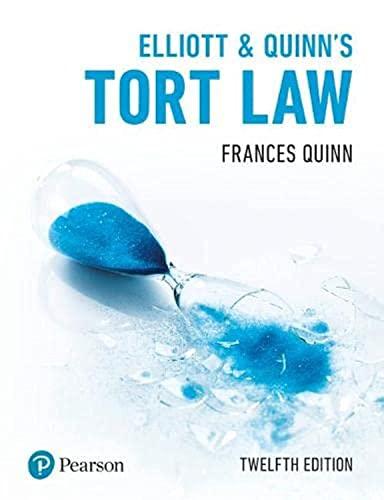Question
Anthony Romeo was an openly gay student at Seton Hall, a Catholic university. He claimed that he elected to attend Seton Hall in part because
Anthony Romeo was an openly gay student at Seton Hall, a Catholic university. He claimed that he elected to attend Seton Hall in part because of its published antidiscrimination policy. In 2003, he applied to the Seton Hall University Department of Student Affairs for provisional recognition of a gay and lesbian student organization. Dr. Laura Wankel, vice president of student affairs at Seton Hall, responded to Romeo's application in a letter, stating in pertinent part: "I am informing you that your application for provisional recognition has been denied. No organization based solely upon sexual orientation may receive formal University recognition." Wankel went on to say that "the Division of Student Affairs remains prepared to work with gay and lesbian students to meet their needs. I am committed to working collaboratively with you and other students in fostering a positive, safe and caring community." Wankel then made a modest proposal giving the group some rights. The proposal, however, was not satisfactory to the students, and Romeo filed his complaint alleging violations of New Jersey's Law against Discrimination. He also cited Seton Hall's nondiscrimination policy: "No person may be denied employment or related benefits or admission to the University or to any of its programs or activities, either academic or nonacademic, curricular or extracurricular, because of race, color, religion, age, national origin, gender, sexual orientation, handicap and disability, or veteran's status." How should the court rule? May a Catholic university prevent recognition of a gay and lesbian student organization? Does the university's nondiscrimination policy make a difference? Why or why not? [Romeo v. Seton Hall University,2005 N.J. Super. LEXIS 197.]
I need to figure out what the court's most likely decision is and the rule of law it involves, stating:
A.The principle, standard, or rule which applies in this case.Explain the rule of law.
B.How the rule of law is supported or negated by the facts in the case.
Step by Step Solution
There are 3 Steps involved in it
Step: 1

Get Instant Access to Expert-Tailored Solutions
See step-by-step solutions with expert insights and AI powered tools for academic success
Step: 2

Step: 3

Ace Your Homework with AI
Get the answers you need in no time with our AI-driven, step-by-step assistance
Get Started


